VA Disability Benefits
VA Disability Compensation provides tax-free monthly payments to veterans with service-connected conditions. This page provides a
step-by-step guide to applying, understanding ratings, and maximizing your benefits.

What is VA Disability?
VA disability benefits provide monthly tax-free compensation to veterans who became ill or injured during military service or whose service made an existing condition worse. Benefits cover both physical and mental health conditions, including PTSD, back pain, and hearing loss.
Covers service-connected physical and mental conditions
Compensation ranges from 0% to 100% rating
Existing conditions made worse by service may qualify
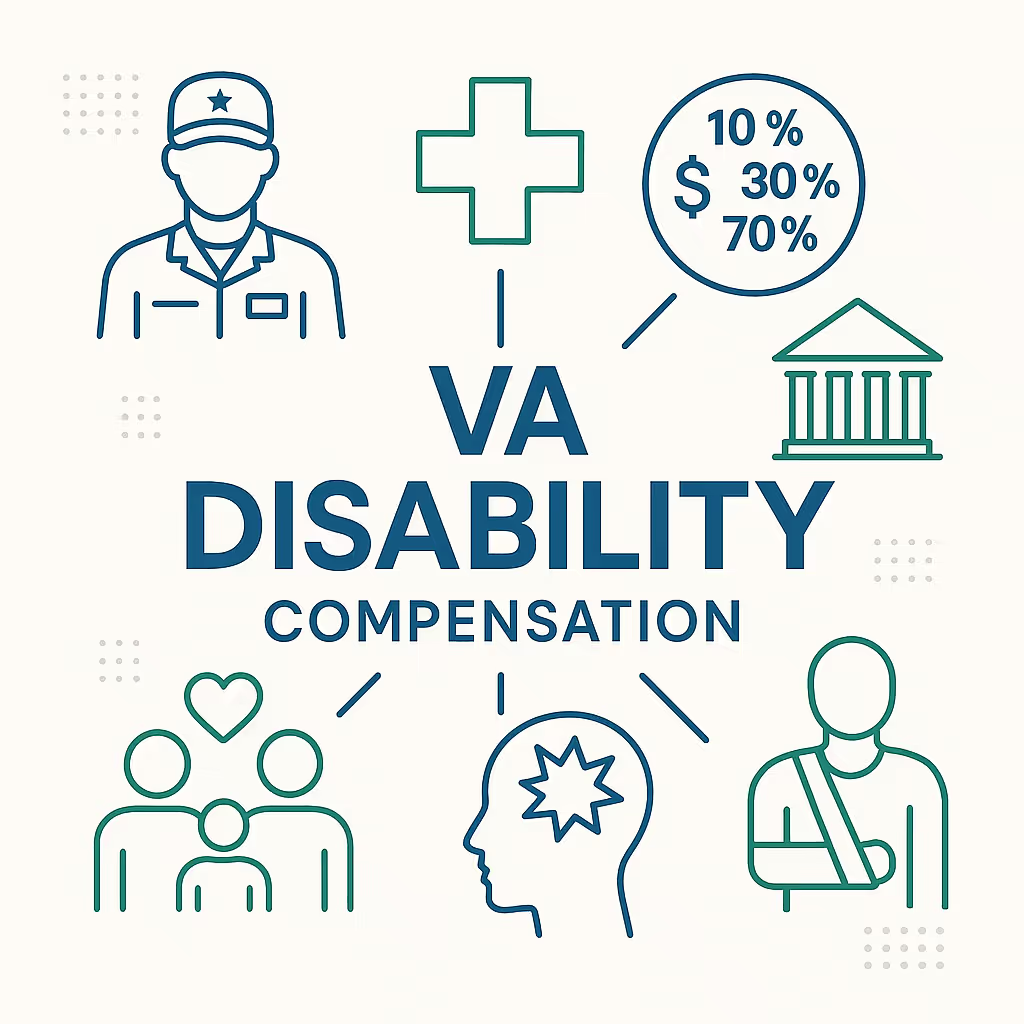
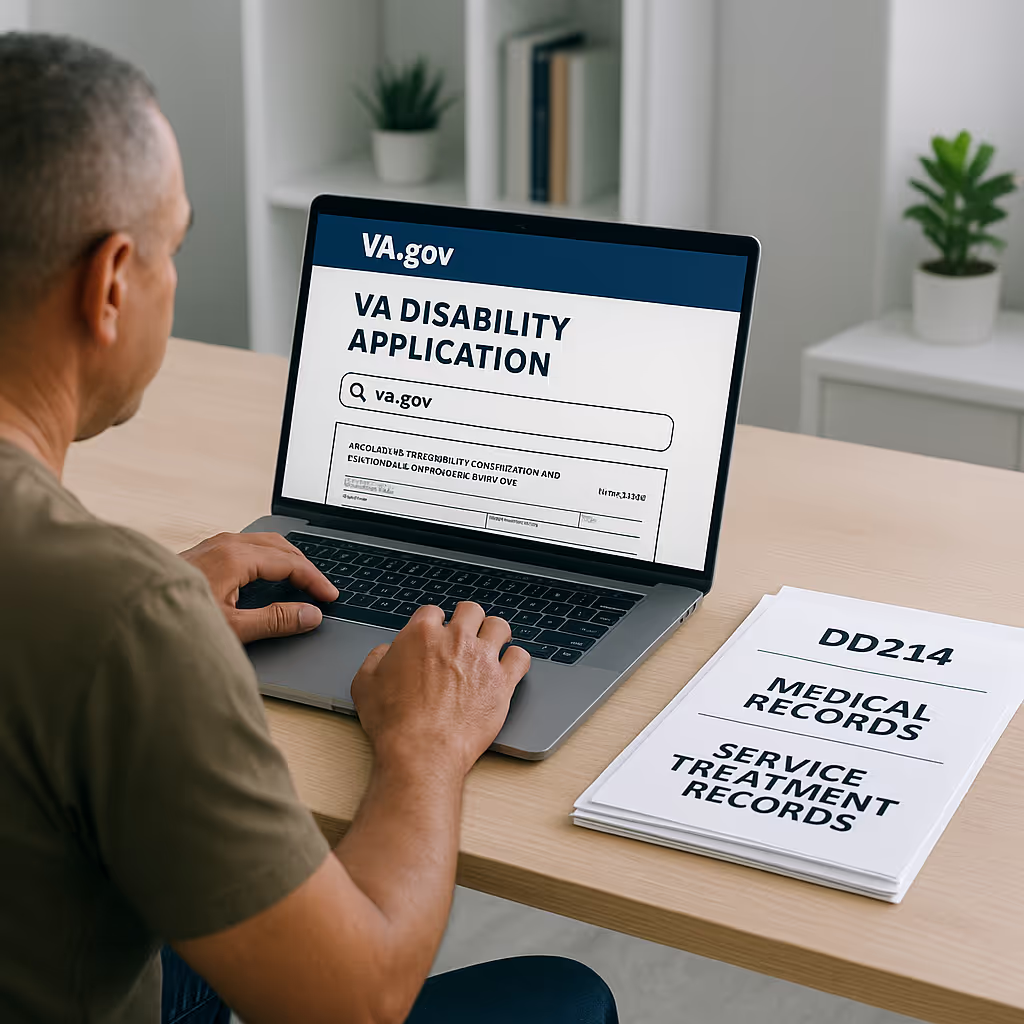
How to Apply
Veterans can apply in several ways. To avoid delays, gather your records before filing.
Online: File at VA.gov using Form 21-526EZ
By Mail: Send completed form to the VA Claims Intake Center
In Person: Submit at your local VA regional office
By Fax: Send directly to the VA intake number
With Help: Work with a VSO, claims agent, or accredited attorney
Required documents include VA and private medical records, DD214 discharge papers, and service treatment records.
Disability Ratings & Pay Rates
The VA assigns a disability rating (0%–100% in 10% steps) to measure condition severity. The rating directly impacts your monthly payment.
2025 Compensation Rates (Veteran Alone):
10%: $175.51
30%: $537.42
50%: $1,102.04
70%: $1,759.19
100%: $3,831.30
Additional pay is available for dependents (spouse, children, or parents).
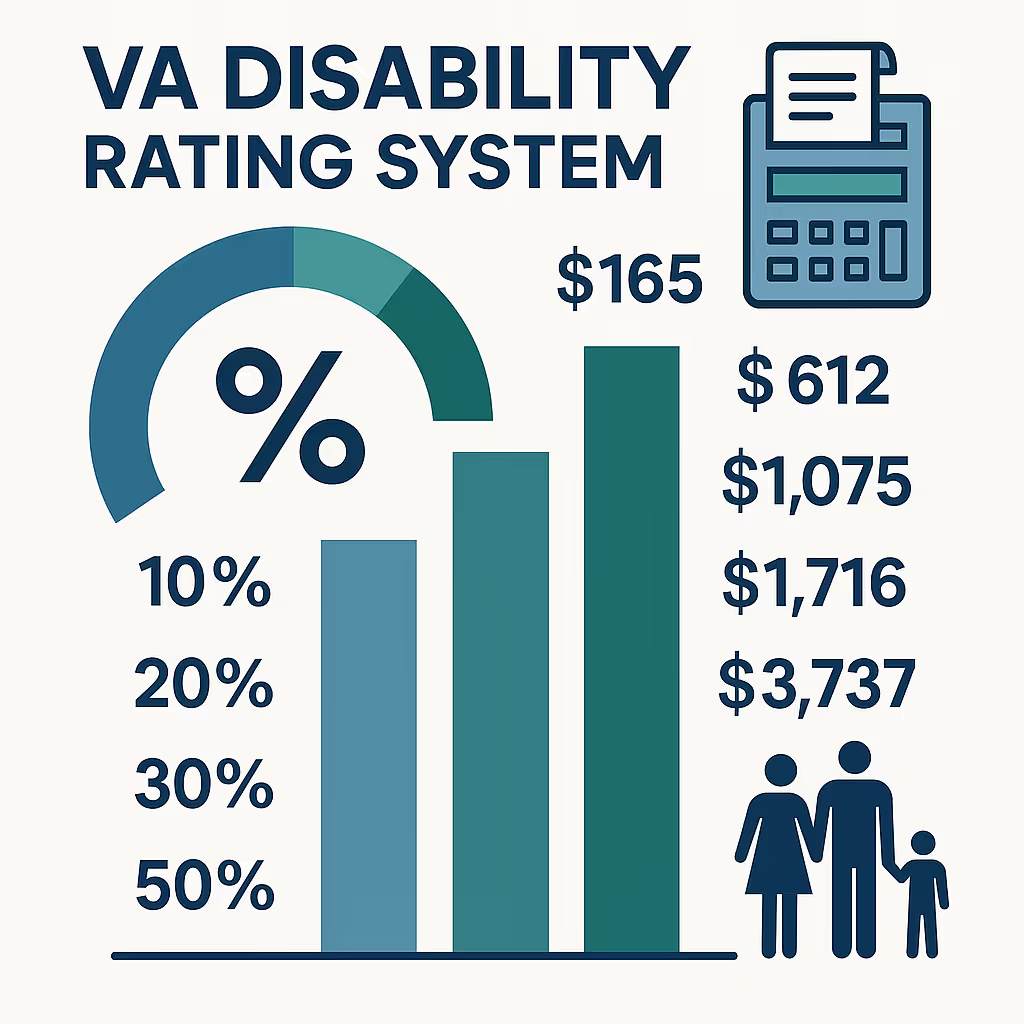

TDIU vs. 100% Disability
Even if your combined rating is below 100%, you may qualify for Total Disability Individual Unemployability (TDIU) if service-connected conditions prevent you from working.
TDIU pays at the 100% rate
Based on employability, not medical rating
Requires 60% (single disability) or 70% combined
with one rated at 40%
Appeals Process
Denied or disagree with your rating? You can appeal under the Appeals Modernization Act.
Options include:
Direct Review: No new evidence, goal: 365 days
Evidence Submission: Add new evidence, goal: 550 days
Hearing: Meet with a Veterans Law Judge, goal: 730 days
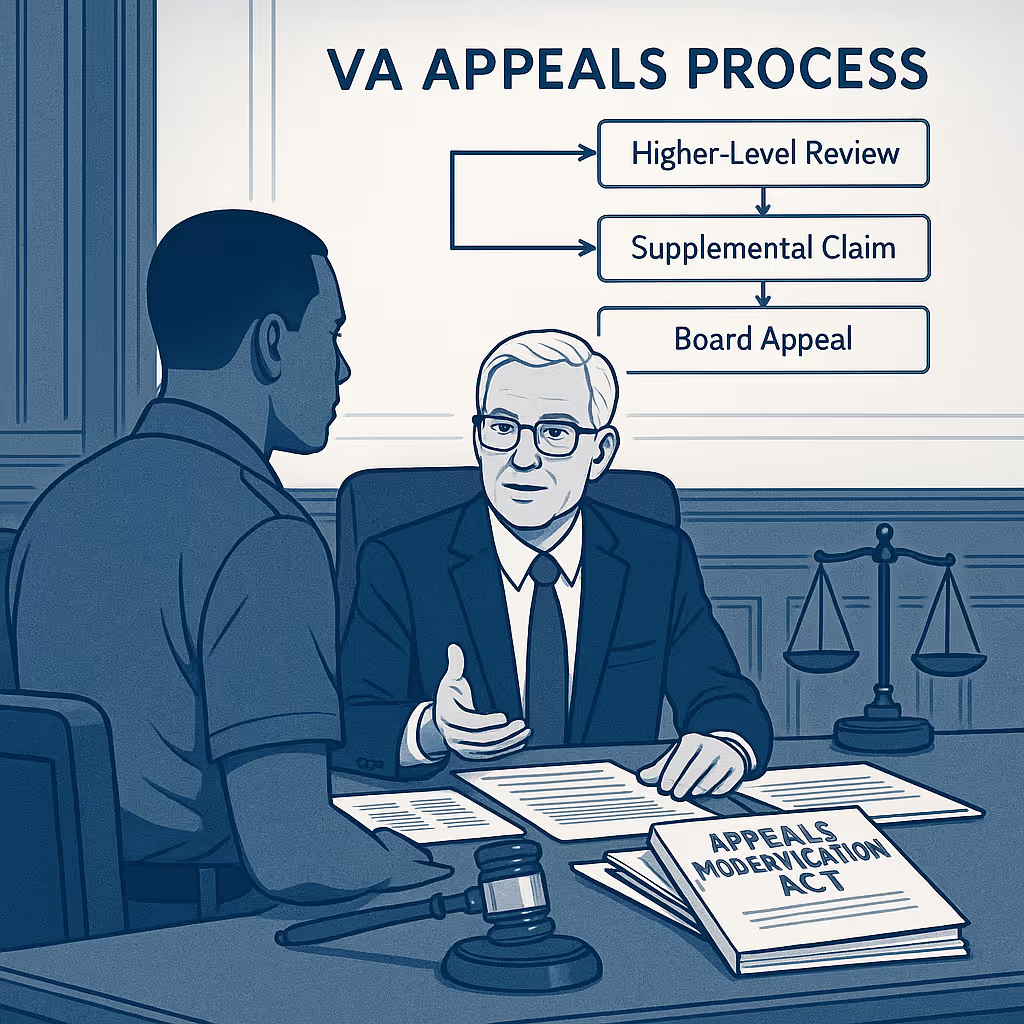

C&P Exam – What to Expect
The Compensation & Pension exam helps confirm your condition and severity.
Scheduled by VA or contractor
May include tests, X-rays, or DBQs
Free of charge; travel covered
Missing the exam delays your claim
Conditions That Qualify
The VA recognizes a wide range of disabilities:
PTSD & other mental health conditions
Chronic back pain & musculoskeletal disorders
Sleep apnea & respiratory conditions
Hearing loss from service environments
Presumptive conditions (Agent Orange, Gulf War, toxic exposure)
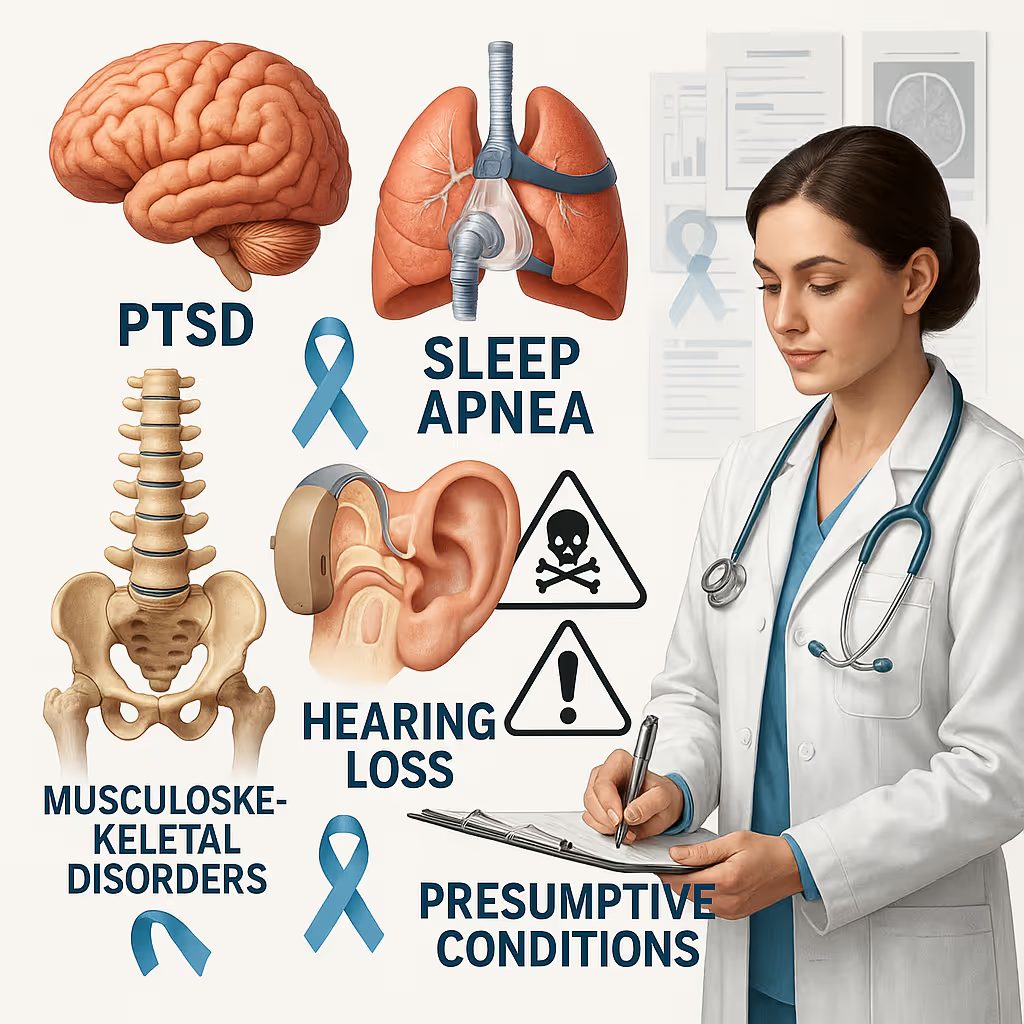
Frequently Asked Questions
The Department of Veterans Affairs assigns a disability rating based on medical evidence, service treatment records, and private medical records. Ratings range from 0% to 100% in 10% increments and directly affect disability compensation benefits. When veterans have multiple service connected disabilities, the VA uses the combined rating system and combined ratings table to calculate the final combined rating, which determines monthly tax free payment amounts.
VA disability benefits cover physical and mental health conditions linked to military service. Common service-connected disabilities include PTSD, chronic illness, hearing loss, and musculoskeletal disorders. Veterans may also qualify if an existing condition got worse due to service. Some conditions are presumptive, such as those tied to Agent Orange, Gulf War exposures, or toxic environments, which simplify the claims process for eligible veterans.
Yes, veterans can work while receiving VA disability compensation. Regular disability benefits are not based on employment status, though Total Disability Individual Unemployability (TDIU) restricts substantially gainful employment. Veterans may still receive a monthly tax-free payment regardless of job status. However, eligibility for additional benefits like aid and attendance benefits or dependency and indemnity compensation depends on dependent status, medical evidence, and the severity of service-connected disabilities.
You can apply for VA disability benefits by filing a VA disability claim online, by mail, in person, or by fax. The required documents include separation papers such as DD214, service treatment records, dependency records such as children’s birth certificates, and private medical records. Many veterans choose help from a veterans service officer, claims agent, or accredited attorney to guide them through the process and ensure stronger disability claim submissions.
If an existing condition becomes worse, you can request a review for an increased disability rating. Submitting updated medical evidence strengthens your case, and the VA may schedule a C&P exam to reassess severity. If approved, your VA disability pay increases according to new disability compensation rates. This ensures that veterans continue receiving appropriate monthly tax-free payments for their service-connected disabilities as their health changes over time.
Yes, veterans with a disability rating of 30% or higher may receive additional compensation for a dependent spouse, dependent children, or dependent parents. Extra benefits may apply if a spouse is receiving aid and attendance benefits or when veterans have more than one child or an additional schoolchild. Eligible surviving spouses and children may also qualify for dependency and indemnity compensation, ensuring continued veterans' disability benefits after the veteran’s death.
VA disability compensation rates are adjusted annually for cost-of-living increases. Compensation rates depend on the veteran’s disability rating, dependent status, and whether there are additional benefits like aid and attendance. The VA rounds the final combined rating percentages to the nearest 10%, applying factors like the bilateral factor when both limbs or organs are affected. These updates ensure fair, consistent monthly payment amounts for all veterans.
Ready to Get Started?
Don’t wait—every month of delay could cost you benefits. Take the first step now.
